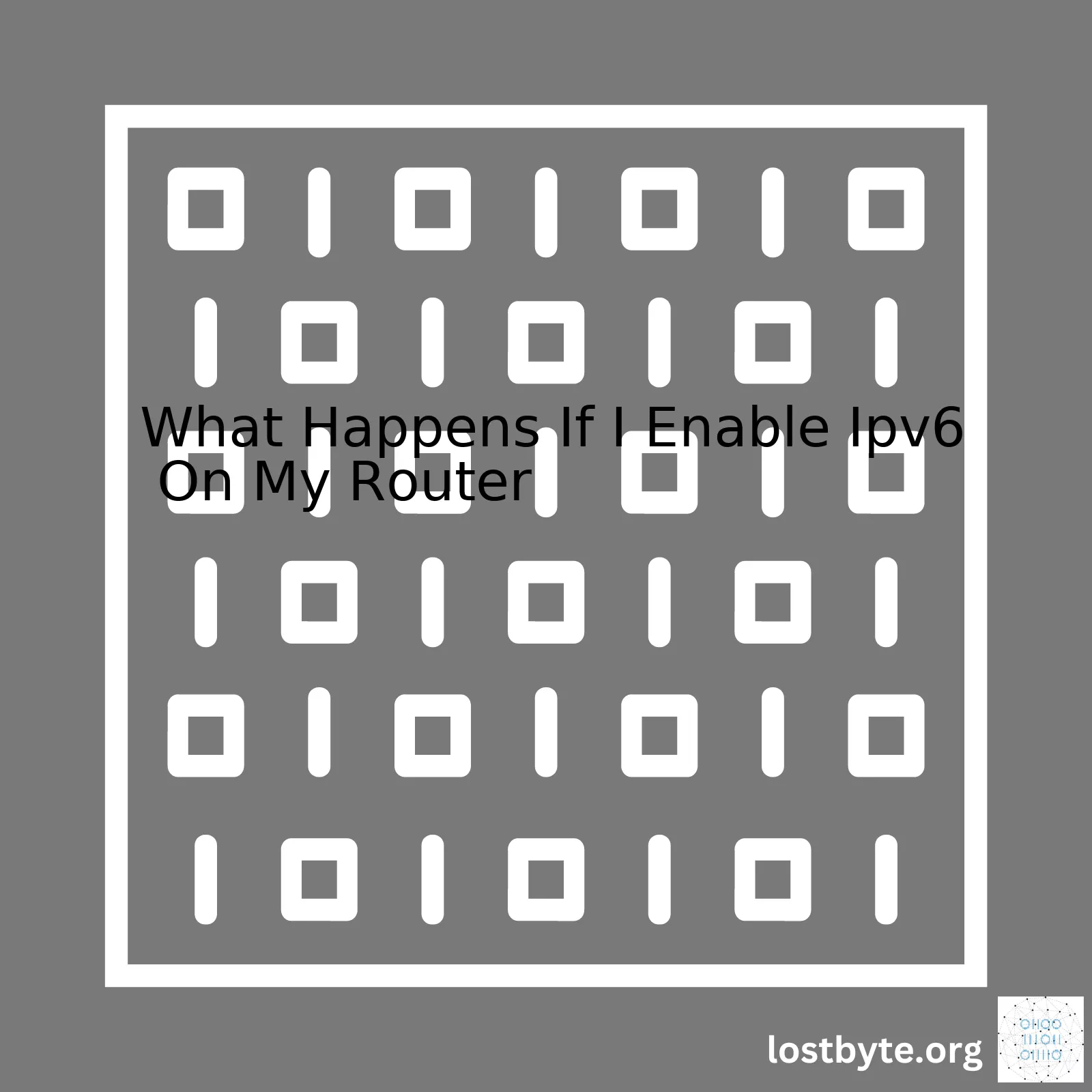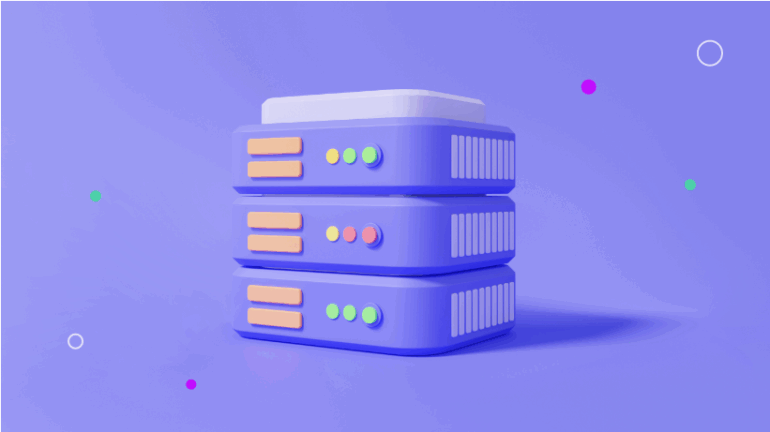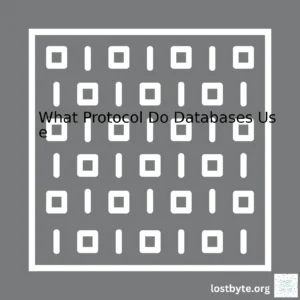
| Scenario | What Happens |
|---|---|
| Enable IPV6 on your router | Your devices gain the ability to use IPv6 addresses for internet communication. |
| All devices on the network must be IPv6 compatible | If some of your devices are not IPv6 compatible, they can still operate under IPv4 provided it is also enabled on your router. |
| Slow Internet Connection | Enabling IPv6 won’t necessarily speed up your internet connection. The performance depends almost entirely on your ISP’s infrastructure. |
| Preparation for future-Readiness | As IPv4 addresses are running low, enabling IPv6 can better prepare you for future when IPv6 becomes more dominant. |
| Device Security | IPv6 provide better security features than IPv4 therefore providing improved security for your connected devices. |
When you enable IPv6 on your router, what really happens is that your devices gain the ability to utilize Internet Protocol version 6 (IPv6) addresses for their internet communications. It should be understood that all devices on that network need not necessarily be immediately IPv6 compatible. Those devices which aren’t, would continue to operate normally using IPv4, as long as IPv4 is also enabled on the router itself.
Your internet connection speed will not register a significant change just by enabling IPv6 as it mostly relies on the infrastructure of your Internet Service Provider (ISP). From a perspective of preparation for the future, with the exhaustion of IPv4 addresses, enabling IPv6 on your router could indeed make you more prepared for the future, where we anticipate the dominant usage of IPv6. Lastly, from a security standpoint, IPv6 offers superior features like IPsec (Internet Protocol Security) making your device more secure compared to IPv4. Source
Let me show you how simple it is to enable IPv6 on your router using general steps:
1. Log into your router's administrator interface. 2. Find the settings area for IP address configuration (often in a section like Network Settings or Connections). 3. Locate the IPv6 options area. Turn on or enable the feature. 4. If necessary, reboot your router to apply the changes.
But note, different brands may have slightly different process hence, always revert back to manual provided by your router manufacturer Source.First, let’s take a couple of moments to discuss what IPv6 is. It stands for internet protocol version 6, and it’s the most recent version of the internet protocol (IP). An IP is basically a set of rules that govern how data is sent and received over the internet. Each device connected to the internet has a unique IP address, which could be a IPv4 or IPv6 address.
IPv6 was created to replace the older version, IPv4. This transition happened because we essentially ran out of unique IPv4 addresses, due in large part to the explosion of internet-connected devices.
Here are a few features of IPv6:
- More capacity: IPv6 uses 128-bit addresses compared to IPv4's 32-bit addresses. Therefore, it creates a tremendous number of potential IP addresses. - No need for Network Address Translation (NAT): With enough addresses made available through IPv6, every device can have its own IP address. This eliminates the need for NAT, which can simplify the routing process. - Better Quality of Service (QoS): In an IPv6 header, there is a field dedicated to QoS handling, which can improve the delivery of streaming video and online gaming.
Let’s also understand “What happens if I enable IPv6 on my router?”
Enabling IPv6 on your router doesn’t mean you will immediately start using IPv6 addresses. Rather, you’ll simply ensure that when the switch fully occurs from IPv4 to IPv6, your router will be ready. If a particular website or online service offers content via IPv6, your router will be able to handle that traffic.
It’s worth noting that enabling IPv6 can lead to a more direct, faster route for network traffic. That’s because IPv6 does not require NAT, where the router must translate public IP addresses to private and vice versa.
Offering more address space, built-in security measures, enhanced efficiency and improved performance for real-time applications, IPv6 clearly has its advantages. However, this doesn’t mean switching your router to IPV6 is going be an entirely smooth ride. Given that not all websites support IPv6 yet, some connections may default back to IPV4 even if IPV6 is enabled on your router.
The main consideration to keep in mind is compatibility issues about other devices within your home network. While most modern technology can handle both versions, older tech might be limited to IPv4, and you would still need IPv4 connectivity for these devices. Furthermore, some older routers don’t fully support IPv6, hence, despite enabling IPv6, specific components of IPv6 like firewall capabilities aren’t provided, thus, showing gaps in security.
Here’s a quick code snippet showcasing how to check your IP version in python:
import socket
def check_ipv6(host, port):
try:
sock = socket.create_connection((host, port))
except OSError as e:
return False
else:
return True if sock.family == socket.AF_INET6 else False
However, enabling IPv6 isn’t likely to cause any harm or dramatically change your internet experience overnight. As we continue to move towards IPv6 due to its good reasons, it will help future-proof your equipment by having it enabled.
For additional study material, follow this link.Sure, let’s delve right into the topic. So, being a coder, I often have to deal with networking concepts and protocols such as Internet Protocol version 4 (IPv4) and Internet Protocol version 6 (IPv6). They play a crucial role on how data is sent and received over the internet. And of course, at home or in the office, our main interaction point with these protocols is usually through our router.
The move from IPv4 to IPv6 is a significant shift primarily because of the explosion of devices connecting to the internet. IPv4 protocol was standardized back in 1981 and has a limitation — it only supports about 4.3 billion unique IP addresses, while that may seem like a lot, consider that every device that connects to the internet needs a unique IP address.
In contrast, IPv6 is designed to handle a virtually unlimited number of addresses (around 340 trillion trillion trillion). This large number ensures that we’ll have enough IP addresses for every device on Earth to connect to the internet without running out.
Now, if you decide to enable IPv6 on your router, a few things will unfold:
- Improved Performance: Since IPv6 doesn’t require NAT (Network Address Translation), you might experience more efficient routing and packet processing, which could lead to improved performance.
- Supports More Devices: As mentioned above, the number of available addresses with IPv6 is vast, more than enough to accommodate an increasing number of Internet of Things (IoT) devices at your home or workplace.
- Enhanced Security: IPv6 mandates the support of IPsec (Internet Protocol Security) which wasn’t a requirement in IPv4. Hence, enabling IPv6 can boost your network security by default.
When it’s performed correctly, enabling IPv6 can go unnoticed. Users won’t see any changes; websites won’t look different. But if there are any configuration issues due to the router firmware or ISP support problems, you might run into connection issues. It’s always best to check the support level of your ISP before switching to IPv6. Test IPv6 connectivity here.
To provide an illustrative example, here’s how to enable IPv6 on a common type of router using Cisco IOS software:
Router(config)# ipv6 unicast-routing Router(config)# interface GigabitEthernet0/0 Router(config-if)# ipv6 address 2001:DB8::1/64 Router(config-if)# no shutdown Router(config-if)# exit
Here, we’re enabling global IPv6 routing, assigning an IPv6 address to the specified interface, and activating the interface.
Remember that IPv6 isn’t just IPv4 with more addresses. It’s a massive upgrade that will ensure the internet continues to grow and function optimally as more and more devices come online every day.
The topic of enabling IPv6 on your router is both relevant and of particular interest in today’s digital era. By diving into what happens when you enable IPv6 on your router, we begin to see its substantial influence on our networking and internet usage.
Understanding IPv6
IPv6 or Internet Protocol Version 6, put simply, is the most recent version of the IP (Internet Protocol). It’s how devices communicate over the Internet by exchanging packets of data. Presented in a hexadecimal format, it replaces the previous IPv4 system which was limited in the number of unique IP addresses available for devices worldwide.
For understanding, consider how phone numbers work. If you eventually run out of unique combinations, what do you do? The solution led us from IPv4 to IPv6 which allows for theoretically unlimited unique IP addresses [source].
The Relevance of Enabling IPv6 on Routers
Enabling Ipv6 on your router implies that you are activating this newer protocol and using it as the means of communication across your network. This is done by tweaking your router’s settings and, with a few clicks, you’ve transitioned to a more advanced networking standard. But why would you want to?
Advantages of IPv6:
Let’s list some reasons:
- More Efficient Routing and Packet Processing: IPv6’s simplified packet header makes routing more efficient. Additionally, IPv6’s built-in capabilities for multicast and anycast provides better traffic routing.
- Directed Data Flows: IPv6 supports multicast rather than broadcast. Multicast enables bandwidth-intensive packet flows (like multimedia streams) to be sent to multiple destinations simultaneously, saving network bandwidth.
- Simplified Network Configuration: Address auto-configuration (address assignment) is built-in to IPv6. It’s no longer necessary to configure static IPs or use complex DHCP setups.
- Improved Security: The IPsec security protocol is built into IPv6. This was an optional feature in IPv4 but is mandatory in IPv6, improving privacy and security.
However, not everything about IPv6 might appeal to everyone. There is a learning curve, especially if you’re comfortable working with IPv4 and have extensive knowledge of it. Also, many older tiers of hardware and software products may not support IPv6, so, before you rush into changes, make sure your equipment can handle the switch.
For example, to enable IPv6 on your router with a generic set of instructions, the process would look something like this; you’ll have to adapt this to your specific router model using the manual or online resources:
1. Login to your router’s web interface. 2. Navigate to the setup/networking section. 3. Look for IPv6 and select enable, or the equivalent action for your specific router. 4. Click Save or Apply.
In conclusion, although the transition has been slow, more ISPs, cloud services, and other internet businesses are making the switch to IPv6 due to growing address space needs and the benefits outlined above. Having an IPv6-enabled router will future-proof your home network, making sure you stay connected in the evolving internet landscape. Future is IPv6 and the sooner you get started with it, the smoother your transition will be when IPv4 is phased out. Whether enabling it right now is beneficial depends largely on your specific usage scenarios and hardware compatibility.Activating IPv6 on your router might seem like a technical challenge, but it’s essentially the action of allowing your router to use new internet protocol versions. Before we get into the weeds, it is worth noting that IPv6 (Internet Protocol Version 6) was developed due to the expected exhaustion of IPv4 addresses.
To start with, enabling IPv6 on your router involves interacting with your router’s administration interface. Here’s a HTML snippet of how one such form may look:
<form action="" method="post"> <label for="ipv6_enable">Enable IPv6:</label> <input type="checkbox" id="ipv6_enable" name="ipv6_enable"> </form>
Once you enable IPv6 on your router, it’s equipped to communicate with devices using this protocol. It can then create an IPv6 address, assign it using DHCPv6 (Dynamic Host Configuration Protocol for IPv6), or through a similar routing functionality.
When you enable IPv6 on your router, here are some of the mechanics behind the scenes:
– Your router receives an IPv6 address from your Internet Service Provider (ISP).
– The router assigns an IPv6 address to each device in your network. This happens via Stateless Address Auto-configuration (SLAAC), DHCPv6 or both.
– These devices can now communicate with other IPv6-enabled devices globally with this unique address.
However, there’s a truth about the actual effects when IPv6 activation occurs. Enabling it doesn’t implicitly mean all your network traffic will instantly switch over to IPv6. This preference is determined by an element called the “Happy Eyeballs Algorithm”. Essentially, your device will try to connect via IPv6 first. If the device finds this too slow, or non-responsive, it’ll resort back to IPv4. In addition, in real-world terms, this means that any potential impact on your internet experience would be minimal and almost unnoticeable.
Lastly, it’s worth mentioning that enabled but misconfigured IPv6 might introduce specific technical problems. One known issue is broken Domain Name System (DNS) resolution if DNS replies arrive over a different protocol (mixed IPv4/IPv6) from what was expected. However, these issues usually stem more from the application side of things rather than the protocol itself.
Thus, enabling IPv6 on your router essentially sets up your home network for the future by embracing dual-stack capabilities. You’re improving flexibility and accessibility without compromising current connectivity. Being aware of these mechanics allows you to better understand the process involved and stays ahead with the growing adoption of IPv6 worldwide.
For more information, I recommend visiting resources such as the Internet Society’s IPv6 Resources page.
As a seasoned coder, I have been fascinated by the many opportunities that come with the Internet Protocol version 6 (IPv6). Not only does it open up the internet to exponentially more users and devices, but there are also potential performance improvements to be gained. Specifically, for routers, enabling IPv6 could enhance network performance in several ways:
Elimination of Network Address Translation (NAT)
In an IPv4 environment, Network Address Translation (NAT) is necessary due to the limited availability of public IPv4 addresses. NAT translates the private IP addresses into public IP addresses, which often creates a bottleneck causing a slowdown in network performance.
However, if you enable IPv6 on your router, there is no need for NAT anymore. Because IPv6 provides roughly 340 undecillion IP addresses, each device can potentially have its unique global IP address. This elimination of NAT could improve the speed and performance of the network.
The implications of this are significant. Let’s look at this simple Python code snippet:
import socket # Create a socket object s = socket.socket(socket.AF_INET6, socket.SOCK_STREAM) # Configuring the IPv6 address and port number ipv6_addr = "2001:db8::1" port_no = 12345 # Bind to the port s.bind((ipv6_addr, port_no)) # Server listens for client connections s.listen(5)
In this code snippet, we create a socket object in Python using the IPv6 family type (AF_INET6). By managing the transport between devices through unique global IP addresses, problems related to NAT are eliminated, leading to an overall boost in network performance.
Improved Routing Efficiency
IPv6 has a simplified packet header structure compared to its predecessor, IPv4. The header size is increased, but the layout is simplified, making routing more efficient.
With IPv6, routers and switching gear require less effort and resources to process packets, thus increasing throughflow and enhancing network downtime prevention.
This is a schematic representation of the IPv6 vs. IPv4 Header:
| IPv4 | IPv6 | |
|---|---|---|
| Header Length | Variable | Fixed (40 bytes) |
| Header Fields | 13 | 8 |
| Fragmentation | Done by Sender and Forwarding Routers | Done by Sender Only |
(Source: Network World)
A More Direct Connection
Another benefit of enabling IPv6 on your router is that IPv6 allows for end-to-end connectivity. In other words, it enhances the possibility for two clients on the internet to connect directly without any interruption or translation on the way.
This direct connection between the clients improves the round-trip time of data transfer, in turn boosting the network speed and performance from the user’s perspective.
It’s also worth noting that even though enabling IPv6 on your router has these potential benefits, not all websites and online services fully support IPv6 yet. Therefore, it is essential to keep the IPv4 enabled for compatibility reasons.
These are just some of the ways how enabling IPv6 on your router can provide potential speed and performance improvements, and it indicates why transitioning to IPv6 is a critical step in modern networking. For more technical details about the transition from IPv4 to IPv6, you may refer to RFC 8200, a request for comments document published by the Internet Engineering Task Force (IETF).
When you enable IPv6 on your router, it brings with it several security implications that should be noted. Notably, the step from IPv4 to IPv6 is a significant change in terms of networking protocols and as such, it alters the landscape drastically.
Increased IP Address Space:
IPv6 uses 128-bit IP addresses, compared to IPv4’s 32-bit addresses. This translates into an almost limitless supply of IP addresses.
Better Scenario:
For e.g., In IPv4: 192.168.0.1
In IPv6: 2001:0db8:85a3:0000:0000:8a2e:0370:7334
What are the security implications? With this increased address space comes the prospect of improved ‘security through obscurity’. The idea being, with so many addresses available, it is extremely difficult for a malicious attacker to scan or track all of them. However, obscurity should never be mistaken for bona fide security measures.[1](https://books.google.com/books?id=aAtWJXdF-XYC&printsec=frontcover#v=onepage&q&f=false).
New Network Features:
Enabling IPv6 introduces new features not present in IPv4 such as mandatory encryption and integrity-checking for data packets.
Normal Scenario:
Data Packets travel => Data Packets arrive (No background check)
With IPv6:
Data Packets travel => Data Packets thoroughly checked => Data Packets arrive
The popular protocol “IPSec”, generally used as an optional feature with IPv4, becomes mandatory with IPv6. As a result, secure network communication will be standard across all devices which will help reduce the avenues for potential attacks
Router Advertisement Flood:
Common IPv6 router implementations suffer from a specific attack vector called Router Advertisements floods.
//Undesirable Scenario
Attacker sends => Multiple misleading "router advertisements" => Devices become confused
The sheer number and falsity of these messages could potentially bring down entire networks with relative ease
In conclusion, adopting IPv6 presents both, prospects for stronger, standardized security measures, but also opens up new vulnerabilities. It is very important to ensure that when enabling IPv6 on your router, you have a clear understanding of these changes and appropriate security measures are implemented to minimize risks.
Enabling IPv6 (Internet Protocol version 6) on your router can certainly affect DNS (Domain Name System) queries. The main reason is that IPV6 uses a different and more modern tech-stack that could possibly result in a faster and smoother internet experience.
Dual Stack Network
When you enable IPv6, your router enters a ‘dual stack’ mode. This means it can support both IPv4 (the older Internet Protocol) and IPv6 simultaneously. DNS servers operate likewise to accommodate both the protocols.
Your_Router ----IPv4---> DNS_Server1
----IPv6---> DNS_Server2
Note:The arrows signify the protocol communication-support between devices.
DNS Queries
DNS queries in an IPv6 environment have two notable characteristics:
Here’s a sample code for creating an AAAA record:
$ host -t AAAA ipv6.google.com ipv6.google.com has IPv6 address 2404:6800:4003:c02::66
But how does enabling IPv6 on a router play into all this? It goes down to how DNS servers handle DNS queries.
Let’s consider you enable both IPv4 and IPv6. When a DNS query happens:
- The system first attempts to use IPv6.
- If the host doesn’t have an ‘AAAA’ record, then the system will fall back to an IPv4 query for an ‘A’ record.
- An IPv4 DNS query will be slower as it’s a secondary option activated only after the primary (IPv6) failed.
However, if you disable IPv6, then solely IPv4 is utilized right away, resulting potentially in faster responses as less time is exhausted on ineffective IPv6 requests.
Note: Keep in mind that if the server or website you’re trying to reach has an IPv6 address, then the latency benefit might tilt in favor of IPv6.
Risks Simplified
One issue you may encounter if you enable IPv6 on your router is lacking IPv6 support from your ISP or misconfiguration issues that could lead to longer latency times in hostname resolution because of unwarranted IPv6 DNS requests.
Logically speaking, when your network starts supporting IPv6, it attempts to connect using IPv6 initially. If there’s a delay/failure in getting necessary support, fallback to IPv4 creates added latency.
Reference: How to Change DNS Servers on Most Popular Routers.IPv6 brings a plethora of benefits to the Internet of Things (IoT) sector. Using IPv6 on your router will ultimately enable these IoT devices to run more efficiently and securely.
# Why use IPv6 for IoT?
There are a number of reasons why you should enable IPv6 on your router to create a better environment for your IoT:
- Scalability: IPv4, with its 32-bit address space can handle just over four billion unique IP addresses, and we’re running out. On the other hand, IPv6, with its 128-bit address space, can accommodate approximately 340 undecillion IP addresses. Enabling IPv6 on your router provides enough unique addresses for every IoT device now and long into the future.
- Ease of configuration: IPv6 brings an auto-configuration capability which is especially useful for IoT devices – this feature allows them to configure their own IP addressing details automatically without the need for a separate server and minimal human intervention.
- Better routing and network topology: By enabling IPv6 on your router, efficient routing and network topology options will be provided due to the hierarchical structure of IPv6 addressing. This makes data routing smoother and faster, cutting down latency which greatly benefits real-time IoT applications like self-driving cars or automation in smart homes.
- Enhanced Security: IPv6 includes built-in security measures such as IPSec (Internet Protocol Security) which ensure secure communication between two end-points, making data sent from different IoT devices much safer.
However, when you enable IPv6 on your router:
– You might initially face compatibility issues. Some older devices might not support IPv6, limiting their internet access.
– You might experience difficulties with certain Internet Service Providers (ISPs), as not all ISPs currently support IPv6.
These potential issues underscore the importance of checking your ISP’s stance on IPv6 and whether your devices can function using this version of the Internet Protocol.
The following
Python
example explains how you can check if a host supports IPv6:
import socket
def check_ipv6(host):
try:
socket.getaddrinfo(host, None, socket.AF_INET6)
except socket.gaierror:
return False
return True
In the above script, the function check_ipv6 attempts to get the address info for the provided host using IPv6 (socket.AF_INET6). If it fails, it means the host doesn’t support IPV6 and it returns False, otherwise, it returns True.
To conclude, enabling IPv6 on your router has several benefits from offering increased address spaces to adding layers of security for IoT devices. It is particularly important for supporting IoT growth and capabilities. But keep in mind that the usability depends on the compatibility of the devices and the support from your ISP. Even so, as technology advances and becomes more widespread, any concerns regarding compatibility or ISP support for IPv6 are likely to resolve themselves naturally.
References
Difference between IPv4 and IPv6: source link
IPv6 features: source link
Importance of IPv6 for IoT: source link
You might be wondering what happens when you enable IPv6 on your home router. Well, the adoption of Internet Protocol version 6 (IPv6) can provide numerous benefits such as enhanced performance and security. Nonetheless, certain issues may arise during or after enabling IPv6. Here’s a look at some troubleshooting tips for implementing IPv6 that will assist you in administering IPv6 more effectively on your network.
RouterConfig# ipv6 unicast-routing
This is the most basic step to enable the IPv6 routing on your router. After entering these commands, it’s crucial to verify the configuration using show commands.
RouterShow# show ipv6 route
Take note, any complications might not necessarily occur on your router but could rise due to the devices connected to the network not being compatible with IPv6. Hence, do consider checking those devices too.
Here are some common issues you might encounter:
– Connection Issues: When you switch over to IPv6 on the router and find connectivity issues on the connected devices, that signifies they’re not IPv6 ready. The solution lies in ensuring all devices are IPv6 compatible.
– Slow Connection: This issue may arise if Quality-of-Service (QoS) needs to be configured. Basically, QoS controls and manages network resources by setting priorities for specific types of data. Therefore, careful QoS configuration is key in averting slow connection speeds.
– Configuration Problems: Misconfiguration leads to problems in the communication between the router and the ISP. Make sure that the addressing scheme is done correctly as per your ISP settings.
On mention of misconfiguration, here’s how you can default settings:
RouterReset# write erase RouterReset# reload
Upon discovering limited IPv6 support or issues, initiating Dual Stack can be relevant. Dual Stack allows for usage of both IPv4 and IPv6, thus ensuring compatibility and flexibility. You can enable this on your router with the following command:
RouterConfig#ipv6 dnd other-config-flag
Final bit would include checking firewall configurations. Although IPv6 has built-in security elements (like IPSec protocol), make sure your device firewalls are optimally configured to adjoin another layer of protection. Visit manufacturer’s site for steps on configuring firewall of specific routers.
Remember that transitioning from IPv4 to IPv6 is an advanced process and considering professional help is advisable if unsure. This Cisco guide, provides detailed troubleshooting procedures which ensure smooth execution of this transition.
To summarize, enabling IPv6 on your home router should not have severe repercussions given the correct implementation and troubleshooting. It presents a valuable advancement towards modernized Internet infrastructure, optimized network performance and heightened security. Nevertheless, don’t forget to recognize potential challenges and proactively devise solutions using the aforementioned techniques.When discussing the eventuality of enabling IPv6 on your router, one cannot ignore crucial remarks about why companies are increasingly leaning towards this advanced Internet Protocol. Companies and personal spaces switching to IPv6, does have an impact on your decision-making process related to enabling IPv6 on personal devices such as a router.
Understanding IPv4 Vs IPv6
Imagine you stay in a city with a population that has boomed way beyond its carrying capacity. This scenario is not too dissimilar to what happened at the end stages of IPv4 utilization. With restricted space (only 4.3 billion addresses) for nodes (devices such as computers, routers) within our global village, allocation was quickly running out. Here’s where IPv6 comes to save the day! It offers approximately 340 undecillion IP addresses (that’s a lot!). By incorporating hexadecimal values and extending the IP address length, IPv6 ensures we won’t run out of these “living spaces” anytime soon.
Hence, enabling IPv6 on your router sets the pace for:
- Ample Address Space:
IPv6 == 'ab80:0000:0000:0000:0000:201a:b909:3217'
The complex structure paves the way for ample unique addresses, meaning each device can pivot from sharing public IPs to owning one.
- Efficient Routing and Packet Processing:
Simplified packet headers lead to even more streamlined processing.
// Non-existent Primary headers in IPv6
Network layer switch {
case 'IPv4': return TCP || UDP || ICMP;
case 'IPv6': return Hop-by-Hop || Destination (Intermediate Node) ||
Routing || Fragment || Authenticated Header ||
Encapsulating Security Payload || Mobility;
...
A reduction in necessary routing information and drop of checksum options translates to efficient network path identifications.
Therefore, companies use IPv6 because:
- It future-proofs their networks
- Promotes efficient data transmission
- Eases network management and configurations
- Opens up opportunities for smart and IoT devices
However, what does turning on IPv6 on your router bring to your table? If the majority of businesses are embracing IPv6, you might notice that websites begin deploying services limited to this protocol hence, potentially quicker loading times. Moreover, your devices (current and future) will be more than equipped for the arising IoT revolution; prepped and ready to handle next-gen devices which will likely default to IPv6 adoptions.
Specifying IPv6 settings for a typical home-network router, includes designating certain parameters:
router.setOptions({
'IPv6 DNS SERVER': 'Optional',
'IPv6 Default Gateway': 'Auto'
});
Your ISP usually feeds the necessary DNS details or a quick setup wizard guides through these configurations.
While enabling IPv6 introduces you to a broad pasture, the humble current state of IPv6 adoption means keeping hold of IPv4 (dual-stack method) is still worthwhile. The march from IPv4 to IPv6 is ongoing (albeit slowly), and joining this march by enabling IPv6 on your router propels a faster, globally connected future internet.
Enabling IPv6 on your router can result in numerous benefits that may improve your online experiences.
- Advanced Connectivity: Unlike its predecessor, IPv4, which uses a 32-bit address and provides over 4 billion unique IP addresses, IPv6 utilizes a 128-bit address. Consequently, IPv6 expands the number of possible addresses into an almost inexhaustible pool, catering to the surging growth of internet-connected devices in our modern era.source
- Better Security: With IPv6 enabled, you’ll have a more secure online environment. This protocol was designed to include IPsec (Internet Protocol Security), a protocol for securing internet communication by encrypting and authenticating all IP packets.source
- Efficient Routing and Network Configuration: In a technical perspective, IPv6 boasts more efficient routing and packet processing, reducing the demand on routers and resulting in enhanced performance and connectivity. Moreover, with stateless and stateful address configuration abilities, network administration becomes more straightforward and less of a complication.
Here is an example of how to enable IPv6 in a simplified manner:
Router_config > enable
Router# configure terminal
Router(config)# ipv6 unicast-routing
However, there are concerns to understand when enabling IPv6 on your router. For one, not all websites and online services support IPv6. Hence, although your network may utilize IPv6, it might still depend on IPv4 for some online tasks. The shortage of universal acceptance for IPv6 currently implies dual-stack operation of IPv4 and IPv6 is the prevailing practice. Yet, even with such valid considerations, the robust functionality and forward-looking advantages of enabling IPv6 make a compelling case to act upon.
It’s also worth considering that some older routers and devices may lack support for IPv6 or have outdated firmware that can lead to issues. Ensure your hardware meets the requirements before making any changes.
| Benefits of Enabling IPv6 | Concerns When Enabling IPv6 |
|---|---|
| Expanded range of IP addresses | Lack of full adoption across all websites |
| Improved security | The need for dual-stack operation |
| Better routing and network configuration | Potential compatibility issues with older routers and devices |
Given the growth trends of Internet usage and the increasing numbers of connected devices everywhere we turn, it’s possible to say that IPv6 will be more of a necessity than an option.source Thus, it only makes sense to adapt early and prepare for what’s inevitably coming. Keep an eye on these points as you consider whether enabling IPv6 on your router aligns with your needs and expectations.










